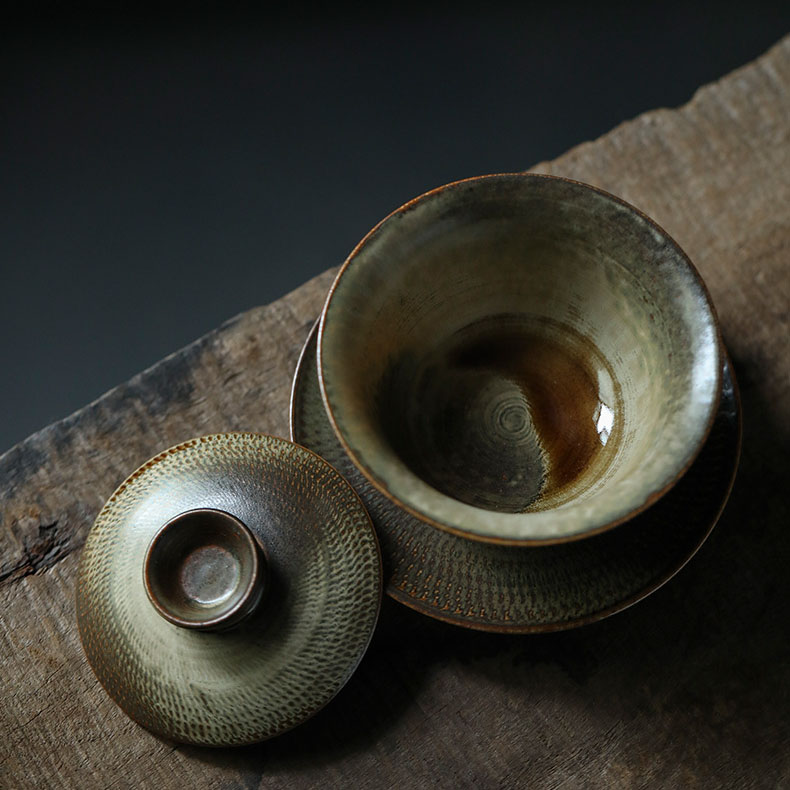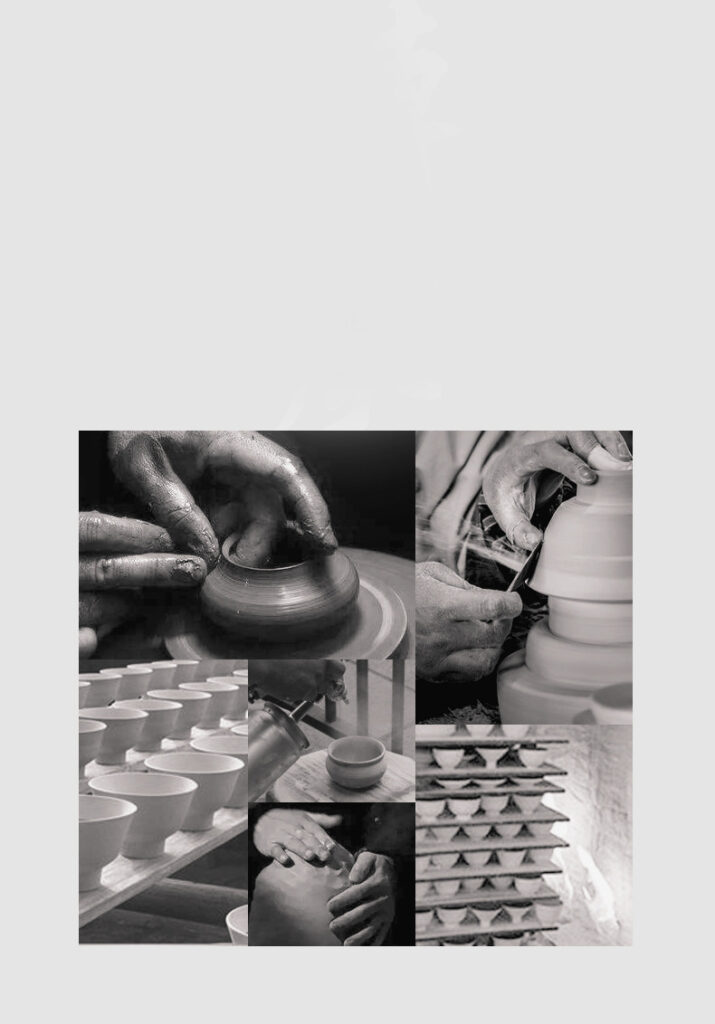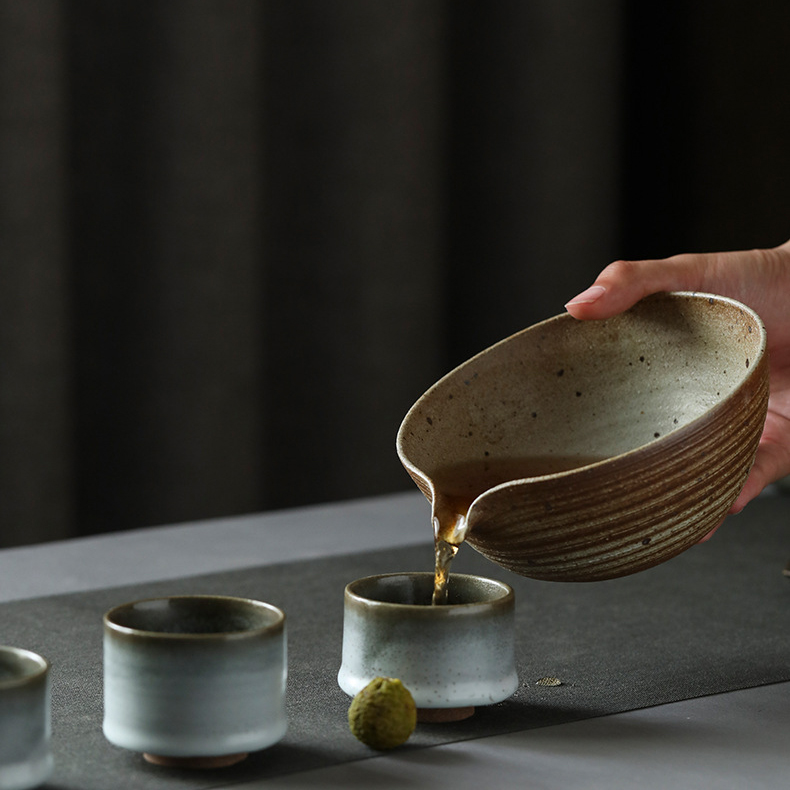
Origins of the Teapot & Cup
The first true teapots emerged during the Song and Ming Dynasties 10th–15th c. in China. In Yixing (宜兴), Jiangsu province, potters discovered the unique properties of zisha (紫砂, purple clay). This unglazed clay absorbed the subtle oils of tea over time, “remembering” the teas it brewed. Each pot became a living archive of its owner’s tea journey.
Alongside the teapot came the teacup, evolving from bowls used during the Tang Dynasty to the smaller, thinner vessels of later dynasties. By the Ming era, porcelain and celadon cups reflected refined aesthetics: translucent, delicate, yet strong enough to hold the essence of the brew.
Japan adapted Chinese teaware into kyūsu (急須) side-handled teapots and ceremonial bowls (chawan 茶碗) for matcha, while Korea perfected celadon (青瓷 Qīngcí), famed for its serene glaze. From these origins, the world inherited not only vessels but a philosophy of how tea should be experienced.
Why Handmade Ceramics Matter
Cups in Tea Culture
Teapots & Cups in Ceremony
In Tea Culture
The teapot and the cup are more than vessels. They are bridges between leaf, water, and spirit — tools that embody centuries of tradition and the artistry of human hands. Handmade ceramics remind us that tea is not only to be consumed, but also to be felt, touched, and shared.

